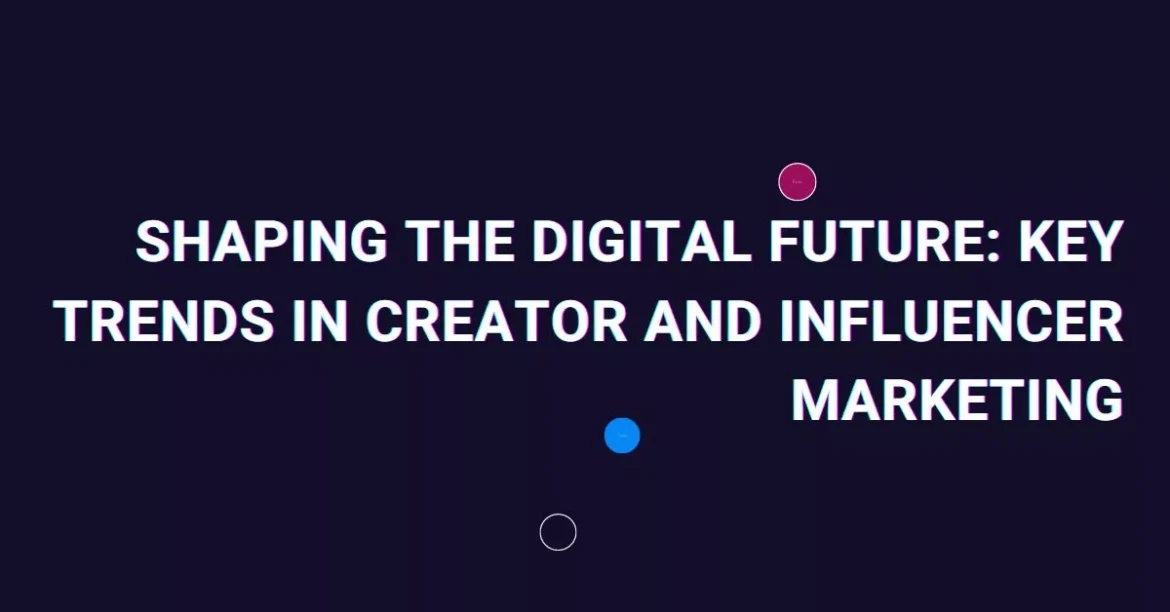The digital landscape is ever-evolving, and with it, the realm of creator and influencer marketing continues to undergo significant transformations. As we move forward, understanding the emerging trends in this space is crucial for brands, creators, and marketers aiming to stay ahead in a competitive environment.
This post explores the current and upcoming trends in creator and influencer marketing, shedding light on how these shifts are shaping the future of digital marketing strategies.
The Rise of Authenticity and Relatability
Authenticity has become the currency of the digital realm. Audiences are increasingly drawn to creators and influencers who showcase genuine experiences, opinions, and vulnerabilities.
This trend is pushing brands to partner with influencers who align with their values and ethos, ensuring that sponsored content feels more like a natural extension of the influencer’s narrative rather than a forced advertisement.

Micro-Influencers and Niche Communities
While celebrity influencers continue to hold sway, micro-influencers (those with smaller, but highly engaged followings) are gaining traction. These individuals often boast higher engagement rates, as their audiences are more invested in their content.
Moreover, their influence within niche communities offers targeted reach and authenticity, making them valuable partners for brands looking to connect with specific demographics.
Long-term Partnerships Over One-off Campaigns
The trend is shifting from one-off sponsored posts to long-term partnerships between brands and influencers. Such collaborations allow for deeper storytelling and more authentic connections with audiences.
Long-term partnerships also enable influencers to become genuine advocates for the brands they represent, adding credibility to their endorsements.
Video Content Dominance
Video content, particularly short-form videos, continues to dominate social media platforms, thanks in part to the rise of TikTok and Instagram Reels.
This format’s popularity is pushing creators and brands to think more creatively about storytelling, leveraging the power of video to capture audience attention and convey messages more dynamically.
Leveraging User-Generated Content
User-generated content (UGC) is not a new concept, but its importance continues to grow. Brands are increasingly curating and featuring content created by their customers or fans, blurring the lines between traditional influencer marketing and organic brand advocacy.
UGC not only provides authentic material for brands but also fosters a sense of community and belonging among audiences.
Focus on Social Commerce
The integration of social commerce features across platforms is transforming the way influencers drive sales. With the ability to tag products, host live shopping events, and even create branded storefronts, influencers are becoming pivotal in the customer journey from discovery to purchase, making influencer partnerships more valuable for brands.
Transparency and Regulation
As influencer marketing matures, transparency and regulation are becoming more prominent. Influencers and brands are required to clearly disclose partnerships and sponsored content to maintain trust with their audiences. This trend towards greater transparency is likely to continue, with platforms and regulators implementing stricter guidelines.
Diversification Across Platforms
While Instagram and YouTube remain central to influencer marketing, there’s a growing trend towards platform diversification. Influencers are expanding their presence across newer platforms like TikTok, Twitch, and even LinkedIn, depending on their niche.
This diversification allows creators to reach wider and more varied audiences, while also safeguarding against the impact of algorithm changes on any single platform.

Data-Driven Strategies
The use of data analytics in influencer marketing is becoming more sophisticated. Brands and creators alike are leveraging data to make informed decisions about content, partnerships, and audience targeting. This trend towards data-driven strategies is enhancing the effectiveness of influencer marketing campaigns, providing measurable insights into ROI.
Sustainability and Social Responsibility
Finally, there’s an increasing emphasis on sustainability and social responsibility within the influencer marketing space. Consumers are more conscious of the social and environmental impact of their purchases and are looking to influencers for guidance on brands that align with their values.
This trend is encouraging brands and creators to prioritize responsibility and transparency in their practices and partnerships.
Conclusion
The landscape of creator and influencer marketing is characterized by rapid change and innovation. Staying ahead in this dynamic environment requires adaptability, creativity, and a deep understanding of emerging trends.
By embracing authenticity, leveraging new technologies and platforms, and prioritizing meaningful engagement, brands and creators can forge powerful connections with audiences and drive success in the digital age.
